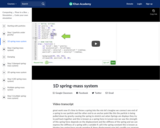
Now we attach our particle to a spring.
- Subject:
- Applied Science
- Arts and Humanities
- Computer Science
- Graphic Arts
- Material Type:
- Lesson
- Provider:
- Khan Academy
- Provider Set:
- Pixar
- Author:
- Disney Pixar
- Khan Academy
- Date Added:
- 07/14/2021

Now we attach our particle to a spring.

Now we add a horizontal component to our system.
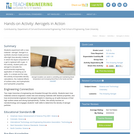
Students experiment with a new materialâaerogel. Aerogel is a synthetic (human-made) porous ultra-light (low-density) material, in which the liquid component of a gel is replaced with a gas. In this activity, student pairs use aerogel to simulate the environmental engineering application of cleaning up oil spills. In a simple and fun way, this activity incorporates density calculations, the material effects of surface area, and hydrophobic and hydrophilic properties.
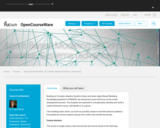
Building on Complex Adaptive Systems theory and basic Agent Based Modeling knowledge presented in SPM4530, the Advanced course will focus on the model development process. The students are expected to conceptualize, develop and verify a model during the course, individually or in a group. The modeling tasks will be, as much as possible, based on real life research problems, formulated by various research groups from within and outside the faculty.
Study Goals The main goal of the course is to learn how to form a modeling question, perform a system decomposition, conceptualize and formalize the system elements, implement and verify the simulation and validate an Agent Based Model of a socio-technical system.

Antarctic Expedition involves a multi-issue negotiation between two university professors over resources for a proposed joint expedition to the Antarctic. Antarctic Expedition encompasses key negotiation concepts such as the best alternative to a negotiated agreement (BATNA), the worst alternative to a negotiated agreement (WATNA) and the zone of possible agreement (ZOPA). Students are also invited to examine the role of principled negotiation, and the applicability of standards and criteria. This simulation has been designed for third level students studying negotiation. Whilst it can be used at an introductory level, it is suggested that it is most appropriate for students who have already been introduced to fundamental negotiation concepts.Teaching Notes include General Instructions, Confidential Instructions for Andy Balfe and Confidential Instructions for Gerry Hopkins.

Ardmara Concert is a multi-party, multi-issue negotiation between a concert promoter, representative of the Residents' Association, representative of the Parents' Association, local TD (politician) and representative of the Business Association over the staging of a concert by a controversial performer. Ardmara Concert is designed for third level students studying negotiation and may be used to introduce students to multi-party negotiation. It also serves as an example of a values-based dispute, in which parties have ethical concerns regarding the impact of the concert.

This course uses the theory and application of atomistic computer simulations to model, understand, and predict the properties of real materials. Specific topics include: energy models from classical potentials to first-principles approaches; density functional theory and the total-energy pseudopotential method; errors and accuracy of quantitative predictions: thermodynamic ensembles, Monte Carlo sampling and molecular dynamics simulations; free energy and phase transitions; fluctuations and transport properties; and coarse-graining approaches and mesoscale models. The course employs case studies from industrial applications of advanced materials to nanotechnology. Several laboratories will give students direct experience with simulations of classical force fields, electronic-structure approaches, molecular dynamics, and Monte Carlo.
This course was also taught as part of the Singapore-MIT Alliance (SMA) programme as course number SMA 5107 (Atomistic Computer Modeling of Materials).
Acknowledgements
Support for this course has come from the National Science Foundation’s Division of Materials Research (grant DMR-0304019) and from the Singapore-MIT Alliance.
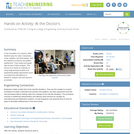
In this simulation of a doctor's office, students play the roles of physician, nurse, patients, and time-keeper, with the objective to improve the patient waiting time. They collect and graph data as part of their analysis. This serves as a hands-on example of using engineering principles and engineering design approaches (such as models and simulations) to research, analyze, test and improve processes.

This resource is a video abstract of a research paper created by Research Square on behalf of its authors. It provides a synopsis that's easy to understand, and can be used to introduce the topics it covers to students, researchers, and the general public. The video's transcript is also provided in full, with a portion provided below for preview:
"Accurate identification of medical alarm sounds can be life-saving, but current standard alarms are difficult to learn. One issue is that these alarms, despite having different melodies, possess highly similar tonal qualities. This makes it hard to distinguish, for example, an alarm indicating an abnormal heart rate from one denoting abnormal oxygen saturation. To ease interpretation, researchers have developed new auditory icon alarms. These real-world sounds are associated with the processes they represent, such as the sound made by pills rattling in a bottle to indicate a drug administration issue or the sound of assisted breathing to denote abnormal ventilation parameters. The intuitive reaction to such sounds should make the icon alarms easier to identify than standard alarms, creating new possibilities to improve patient safety. The team tested the usability of the icons in a simulated intensive care unit..."
The rest of the transcript, along with a link to the research itself, is available on the resource itself.
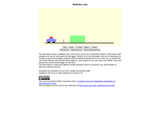
The simulation shows a ballistics cart. If the cart is at rest on a horizontal surface, it will shoot a ball straight up in the air, and catch the ball again. What if, as in this simulation, the cart is traveling at a constant velocity horizontally, instead? Will the ball land ahead of the cart, in the cart, or behind the cart? Note that the cart fires the ball straight up, with respect to the cart, when the middle of the cart passes the small vertical trigger on the track.
Use the buttons to select the different modes (whether there is a tunnel or not, and whether to show the velocity vectors).

Look inside a resistor to see how it works. Increase the battery voltage to make more electrons flow though the resistor. Increase the resistance to block the flow of electrons. Watch the current and resistor temperature change.

This textbook is designed for beginning learners who want to learn basic Japanese for the purpose of living and working in Japan. Unlike textbooks written primarily for students, whose content largely centers on student life, this book focuses more on social and professional life beyond school.
As a beginning level textbook, this book includes many elementary grammar patterns (Japanese Language Proficiency Test Levels 5 and 4), but the vocabulary and situations are selected specifically for working adults. Explanations are kept concise so as to only cover key points. The main focus is on oral communication and the accompanying audio is to be used extensively. This textbook can be used for self-study, as part of an online course, or as a traditional college course.
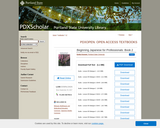
This textbook is designed for beginning learners who want to learn basic Japanese for the purpose of living and working in Japan. Unlike textbooks written primarily for students, whose content largely centers on student life, this book focuses more on social and professional life beyond school.
As a beginning level textbook, this book includes many elementary grammar patterns (Japanese Language Proficiency Test Levels 5 and 4), but the vocabulary and situations are selected specifically for working adults. Explanations are kept concise so as to only cover key points. The main focus is on oral communication and the accompanying audio is to be used extensively. This textbook can be used for self-study, as part of an online course, or as a traditional college course.

This textbook is designed for beginning learners who want to learn basic Japanese for the purpose of living and working in Japan. Unlike textbooks written primarily for students, whose content largely centers on student life, this book focuses more on social and professional life beyond school.
As a beginning level textbook, this book includes many elementary grammar patterns (Japanese Language Proficiency Test Levels 5 and 4), but the vocabulary and situations are selected specifically for working adults. Explanations are kept concise so as to only cover key points. The main focus is on oral communication and the accompanying audio is to be used extensively. This textbook can be used for self-study, as part of an online course, or as a traditional college course.

Lean thinking, as well as associated processes and tools, have involved into a ubiquitous perspective for improving systems particularly in the manufacturing arena. With application experience has come an understanding of the boundaries of lean capabilities and the benefits of getting beyond these boundaries to further improve performance. Discrete event simulation is recognized as one beyond-the-boundaries of lean technique. Thus, the fundamental goal of this text is to show how discrete event simulation can be used in addition to lean thinking to achieve greater benefits in system improvement than with lean alone. Realizing this goal requires learning the problems that simulation solves as well as the methods required to solve them. The problems that simulation solves are captured in a collection of case studies. These studies serve as metaphors for industrial problems that are commonly addressed using lean and simulation.

This course focuses on feedback control mechanisms that living organisms implement at the molecular level to execute their functions, with emphasis on techniques to design novel systems with prescribed behaviors. Students will learn how biological functions can be understood and designed using notions from feedback control.
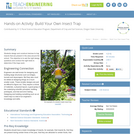
Students design and construct devices to trap insects that are present in the area around the school. The objective is to ask the right design questions and conduct the right tests to determine if the traps work .
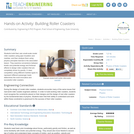
Students build their own small-scale model roller coasters using pipe insulation and marbles, and then analyze them using physics principles learned in the associated lesson. They examine conversions between kinetic and potential energy and frictional effects to design roller coasters that are completely driven by gravity. A class competition using different marbles types to represent different passenger loads determines the most innovative and successful roller coasters.

This CLE presentation examines the use of simulations to teach student how to navigate ship and boats. The presentation discusses why the tools are appropriate for this constructivist learning.

Cancún Corner involves a negotiation between two friends and business partners over the launch of a Mexican restaurant.This is a negotiation exercise, however, it can also be used as a mediation simulation with some amendments. This simulation was designed for third level students studying negotiation and/or alternative dispute resolution (ADR). Whilst it can be used at an introductory level, it is suggested that it is most appropriate for students who have already been introduced to fundamental negotiation concepts. Guidance in relation to modifying this exercise as a mediation simulation is included. Please note that a mediation simulation will require a group of three students (or four students if a co-mediation model is adopted). This simulation may be used to introduce identity-based, conflict of values disputes. Identity may affect the substance of a negotiation nad has the potential to make even simple negotiations difficult to traverse. Teaching Notes include General Instructions, Confidential Instructions for Jane Parker, and Confidential Instructions for Sarah Byrne.